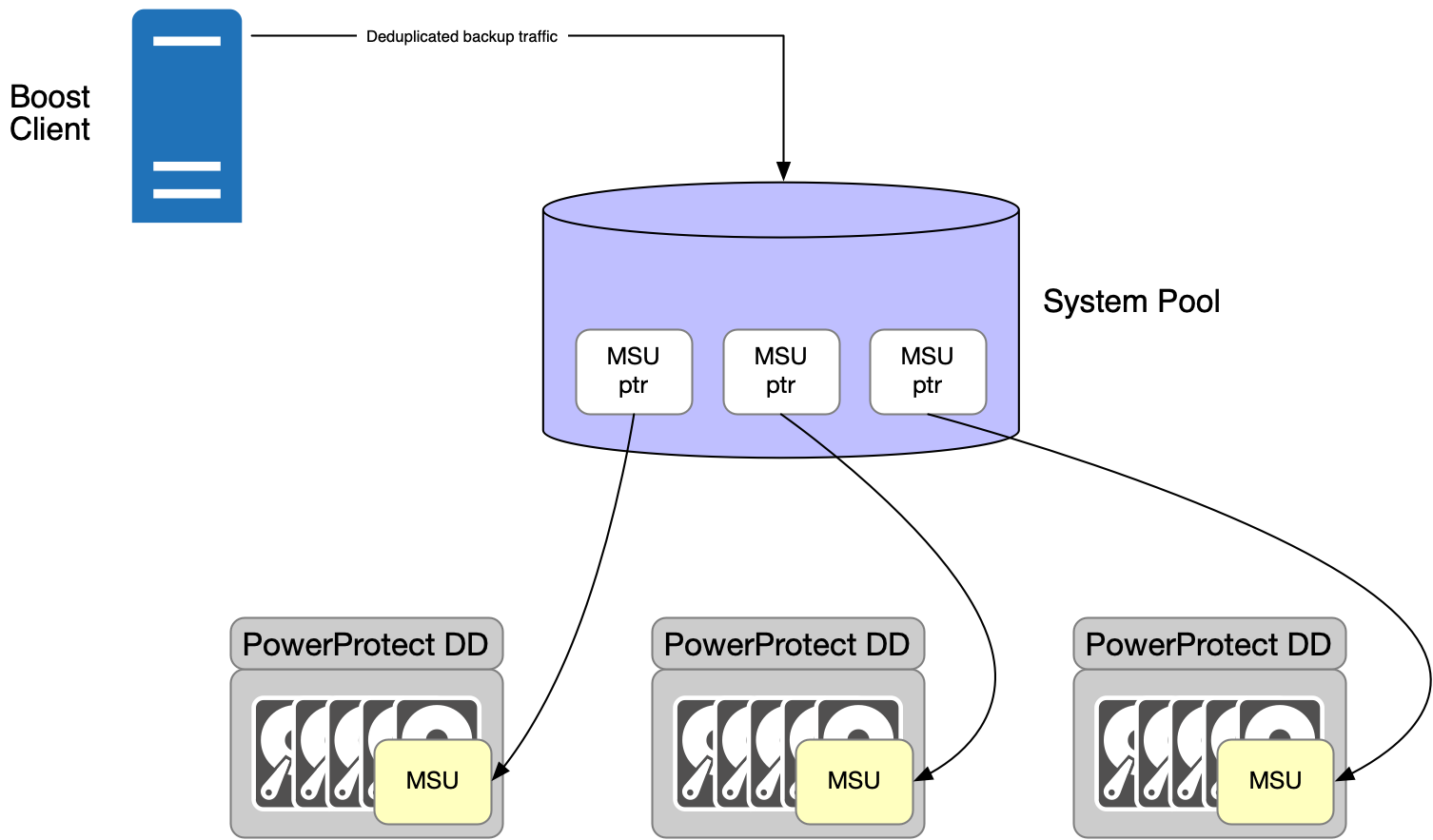A single PowerProtect DD series appliance can hold a staggering amount of backup data within your environment. The DD9900 for instance supports an active tier capacity of approximately 1.5 PB. If you get that 80% full with 40:1 deduplication, you’re holding 48 PB of backup data on a single system – and that’s before adding Cloud Tier into the mix.
But what if you need even more storage? Not just 80% of a DD9900, but 200% or more?
Well, that’s what Smart Scale is. Or rather, what it lets you do.
Smart Scale allows you to provide a combined pool of storage across multiple PowerProtect DD systems. Once you’ve allocated clients to a Smart Scale pool, the coordination engine automatically directs Boost connections to the most appropriate specific Mobile Storage Unit (MSU) for backup and recovery operations. At a high level, that means you get an arrangement such as:

Honouring the standard Boost API ethic of keeping data and control/metadata paths separate, the coordination process negotiates a data path for the client at the start of the backup or recovery process, then the client sends data to the correct MSU directly, which prevents bottlenecks and ensures the system scales.
If you’ve got a large environment and want to reduce the administrative overhead of balancing storage across multiple systems, Smart Scale will let you efficiently focus on getting the backup data from client to storage, and handle the balancing process for you.
Smart Scale supports Boost client access through NetWorker and PowerProtect Data Manager.
If you want more details on Smart Scale, be sure to check out the official Dell Technologies Information Hub page for it, which can be found here.

1 thought on “What is Smart Scale?”